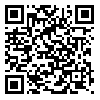Volume 4, Issue 3 (9-2015)
JCP 2015, 4(3): 329-336 |
Back to browse issues page
Download citation:
BibTeX | RIS | EndNote | Medlars | ProCite | Reference Manager | RefWorks
Send citation to:



BibTeX | RIS | EndNote | Medlars | ProCite | Reference Manager | RefWorks
Send citation to:
Mehrkhou F, Musavi M, Talebi A A. Effect of different Solanaceous host plants on nutritional indices of Spodoptera exigua (Lepidoptera: Noctuidae). JCP 2015; 4 (3) :329-336
URL: http://jcp.modares.ac.ir/article-3-5840-en.html
URL: http://jcp.modares.ac.ir/article-3-5840-en.html
1- Department of Plant Protection, Faculty of Agriculture, Urmia University, Urmia, Iran.
2- Department of Entomology, Faculty of Agriculture, Tarbiat Modares University, Tehran, Iran.
2- Department of Entomology, Faculty of Agriculture, Tarbiat Modares University, Tehran, Iran.
Abstract: (5392 Views)
The beet armyworm Spodoptera exigua (Hübner) is a serious and economically important pest of solanaceous crops worldwide. The nutritional indices of this pest on three host plants including pepper Capsicum frutescens, eggplant Solanum melongena and tomato Solanum lycopersicum were determined under laboratory conditions at 26 ± 1 °C, 60 ± 5% RH and 16: 8 (L: D) h. The highest relative consumption rate (9.40 mg/mg/day) and approximate digestibility (95.20%) were recorded on eggplant. The relative growth rate (RGR) (0.08 mg/mg/day) was the highest on tomato. The efficiency of the conversion of ingested food (ECI) (1.66%) and efficiency of conversion of digested food (ECD) (2.22%) were significantly highest on pepper. Results showed that pepper was the most nutritionally suitable food and even small amount of this food could successfully support maximum RGR as evidenced by high value of ECI and ECD.
Received: 2014/07/24 | Accepted: 2015/02/9 | Published: 2015/06/1
| Rights and permissions | |
 |
This work is licensed under a Creative Commons Attribution-NonCommercial 4.0 International License. |








